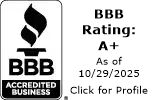In the United States (as with any self-respecting democracy), people who aspire to work in the security sector undergo mandatory screening to ensure they pose no risk to national security.
Failing these tests will not only have you off the merit list. Relevant departments may recommend additional investigations, potentially leading to arrest and imprisonment.
In recent decades, polygraph testing has gained tremendous popularity in the surveillance community for its reliability in sniffing out potential national security threats.
Lie detector reports may not conclusively point to guilt or innocence. However, they can corroborate other pieces of evidence to unmask high-risk individuals before they get ahead with their sinister plans.
But security checks aren’t only mandatory for prospective job seekers. Existing government employees must equally undergo routine screening to obtain various security clearance levels.
Here’s a breakdown of the U.S. government’s security clearance structure and the requirements for each stage.
What Is Government Security Clearance?

Security clearance is a structured process that allows individuals to access certain classified information. While synonymous with the U.S. government, virtually all independent countries maintain official data access protocols.
Security clearance structures are hierarchical. That means access to a particular level automatically lets you view all other information beneath it. More importantly, the U.S. government mandates rigorous checks before granting access to its classified information.
Conducting a polygraph test may help determine if an individual warrants the information access privileges they’re seeking. If properly administered, lie detector tests can be an invaluable tool in assessing the examinee’s trustworthiness with sensitive state secrets.
About Controlled Unclassified Information
Despite a common misconception, Controlled Unclassified Information (CUI) isn’t one of the U.S. government’s official security clearance designations. Rather, it denotes a level where information dissemination is regulated.
Government employees can readily access controlled unclassified information when required. However, certain safeguards are paramount while distributing CUI to ensure it doesn’t slip into the wrong hands.
The U.S. Department of Defense is a noteworthy federal agency that handles controlled unclassified information. CUI examples include defense invoices, payrolls, and command structures.
CUI is often confused with Federal Contract Information (FCI). But while both information types come with federal contracts, FCI is typically meant for personal vendor consumption, while CUI may be shared with third-party stakeholders.

What Are The Security Clearance Levels?
1. Confidential
Confidential is the first security clearance level. To obtain this clearance, you must undergo weeks to months of extensive investigation.
Investigations scope out for red flags in your professional background, criminal record, and social media activity. Confidential security clearance is renewable with subsequent investigations every 15 years.
2. Secret
Secret security clearance imposes even more stringent requirements. Investigations can last from a few months to a year, depending on the extent of information required.
Commonly investigated aspects include;
- Residence history, including past residences in foreign countries
- Family ties, including having families outside the U.S.
- Significant ties with the United States’ arch adversaries
- Ties with known terrorists, terrorist sympathizers, or fundamentalist groups
- Financial crimes like money laundering
- Other financial aspects, like outstanding loans, poor credit score, and bankruptcy
Secret security clearances are renewable with other investigations after ten years.
3. Top Secret
Top secret clearances grant access to information that directly impacts national security, such as data on counterintelligence activities.
It may take you three months to two years to obtain top secret clearance, depending on the scope of investigations required.

The Role of Polygraphs in Government Security Clearance
1. Pre-employment Screening
The Employee Polygraph Protection Act (EPPA) of 1988 bars most private employers from administering mandatory lie detector tests as a pre-employment screening tool or to investigate workplace incidents.
However, federal agencies are exempted from this law. Agencies responsible for security clearance, such as the Federal Bureau of Investigation (FBI) and the Department of Defense (DoD, typically conduct polygraphs on potential employees.
2. Streamlining Government Contracting
Government contractors may need to obtain certain security clearance levels to qualify for government contracts.
Having prospective vendors submit to polygraph tests enables security agencies to validate their trustworthiness with classified information.
3. Minimizing Security Incidents
The U.S. government has been the recipient of major security breaches over the years. From aggressive cyber incidents like the SolarWinds Attack to full-blown acts of terror like 9/11, these events can have far-reaching implications.
Some attacks are waged by external actors. However, others are aided and abetted by spies within the U.S. security system.
Agencies can utilize polygraphs alongside other investigative techniques to vet individuals seeking higher security clearance. This helps minimize dangerous access to sensitive information.
4. Providing Effective Deterrence
No one wishes to fail high-stakes polygraphs. By simply mandating lie detector tests, security agencies can deter individuals with questionable motives from seeking clearance.
If there’s already a mole within the system, the individual may consider resigning rather than undergoing the next mandatory polygraph test. This prevents existing threats from escalating.

Bolstering National Security Through Mandatory Polygraph Tests
The United States is both a critical ally and an existential threat, depending on who you ask. That double-edged description explains why the country faces active security threats. To minimize these risks, it’s imperative to impose relevant security clearance checks for prospective and current national security employees.
Tapping into polygraphs can bolster the outcome of screening procedures, enabling security agencies to nip threats in the bud.
Lie detector tests may not offer probable cause, in and of themselves. But if properly administered by a qualified examiner, they can provide compelling secondary evidence where an individual’s credibility is under intense scrutiny.






